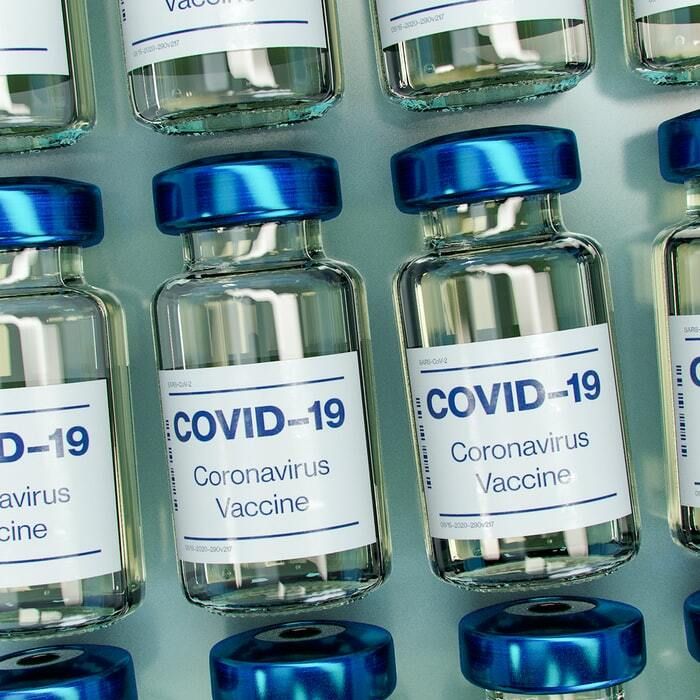Infection
Infants Under 2 Months Had Less Frequent SARS-CoV-2 Infections Versus Other Respiratory Infections
Children under 2 months of age have had less frequent and less severe SARS-CoV-2 infection than other viral respiratory infections, according to recent findings.1
These findings resulted from a recent study from France conducted to improve upon the lack of published data regarding COVID-19 burden relative to other types of respiratory tract diseases resulting from viruses in this particular age group.2
To address the lack of available literature on this age group, the research was conducted and led by François Dubos MD, PhD, from Pediatric Emergency Unit and Infectious Diseases at University of Lille in France.
“The primary objective of the present study was to determine the frequency of SARS-CoV-2 infection in children under the age of 2 months during a 1-year epidemic period of COVID-19,” Dubos and colleagues wrote.
The investigators had several secondary goals: assessing the occurrence of COVID-19 variant infections in infants under 2 months of age, (ii) examining the prevalence of positive results from multiplex-PCR tests for different respiratory viruses within the same outbreak period, and (iii) making a comparative analysis of the disease burden between SARS-CoV-2 and other respiratory viruses.
The investigators utilized a retrospective, single-center, cross-sectional trial which they carried out at Lille University Hospital in the span between March 2021 – February 2022. The team’s research involved infants under 2 months which had been admitted within this period and then tested for SARS-CoV-2 through the use of a reverse transcriptase (RT)-PCR assay.
The research team’s assessment did not include children who had been 2 months of age or older, it did not include repeat samples, and it did not include duplicated patient records. The team’s detection of the subjects’ SARS-CoV-2 and other viruses in their nasopharyngeal swabs was assessed by using respective guidelines of assay manufacturers.
Each test result was reviewed by a medical biologist. The study classified epidemic periods based on SARS-CoV-2 variant spread. It separated the periods into the “Alpha” from February – June 2021, the “Delta” from June – December 2021, and the “Omicron period” from December 2021 – February 2022.
During the period known as Alpha, the team’s measures they looked at were mask mandates, a nationwide lockdown, restrictions on travel, closures of public place, and a curfew. Masks had been mandatory indoors, and gathering limits were in place at the time of the Delta and Omicron periods, though schools were open during the study.
The main goal of the investigators was to determine SARS-CoV-2 positivity among infants under 2 months during the study. Secondary goals of the team included examining recently-circulating variants of SARS-CoV-2, intensive care unit admissions, positive multiplex RT-PCR tests for other respiratory viruses, hospital rates of admission, length of hospital visits, and the need for respiratory support for SARS-CoV-2 and other respiratory viruses.
The investigators assessed the data of 727 children who had been given RT-PCR testing for cases of SARS-CoV-2. Among the subjects, their average age was shown to be 0.9 months, and 57% of the study subjects were boys.
The research team reported that 71% were found to have been seen in emergency rooms, while 29% were admitted to hospital facilities. Among them, 8.5% were noted as having tested positive for SARS-CoV-2 through the RT-PCR test, and the team added that this rate of positivity was much higher at the time of Omicron versus Alpha (23% versus 4%, respectively).
Among the 78% of participants who had been given a multiplex RT-PCR test for other viruses, 58% were found by the investigators to have tested positive for several different other viral infections. Those who were found to have tested positive for SARS-CoV-2 were also shown to be less likely to need enteral nutrition (P = 0.03), respiratory support (P = 0.001), or intensive care support (P = 0.01).
This group also were noted as having had a shorter stay in hospitals by the research team, with an average of 5 total days. This contrasted to those with other viruses who had an average stay of a week (P = 0.007).
“This study should guide practitioners toward a management not different from that of other respiratory viral infections, without over-treating or over-medicalizing in young children with a SARS-CoV-2 infection,” they wrote. “Systematic viral detection with rapid results could be introduced to reduce the proportion of antibiotic prescriptions in children with viral infections.”
- Latouche, M, Ouafi, M, Engelmann, I, et al. Frequency and burden of disease for SARS-CoV-2 and other viral respiratory tract infections in children under the age of 2 months. Pediatr Pulmonol. 2023; 1-10. doi:10.1002/ppul.26718.
- Spoulou V, Noni M, Koukou D, Kossyvakis A, Michos A. Clinical characteristics of COVID-19 in neonates and young infants. Eur J Pediatr. 2021; 180: 3041-3045. doi:10.1007/s00431-021-04042-x.

